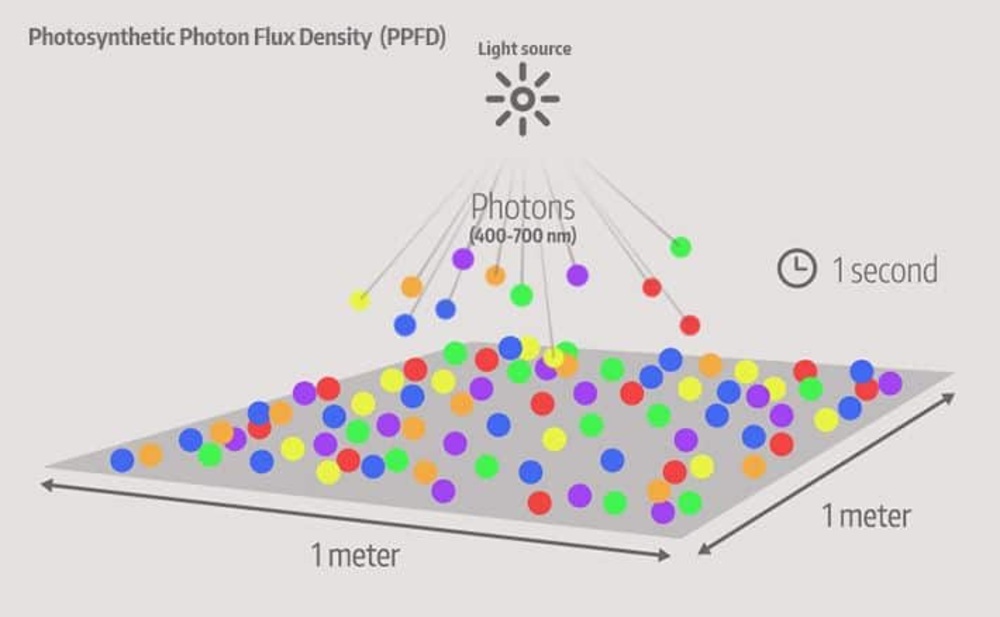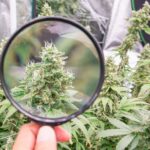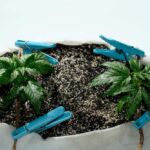The Best Fluffy Pancakes recipe you will fall in love with. Full of tips and tricks to help you make the best pancakes.

What is the right PPFD for autoflowers?
Getting your autoflowers to thrive isn’t just about watering them right or picking a good nutrient schedule—it’s also about understanding light. More specifically, understanding how much light you’re giving your plants, and whether that light is actually being absorbed effectively. That’s where PPFD comes in. PPFD, or Photosynthetic Photon Flux Density, is one of the most important lighting metrics for indoor cannabis cultivation, especially for autoflowers.
If you’re just starting out with autos, or even if you’ve been growing them for a while but haven’t really gotten into the nitty gritty of light science, don’t stress. I’m going to walk you through exactly what PPFD is, why it matters for autoflowers, and how to dial it in for each stage of growth to max out your yield without stressing your plants.
What is PPFD and why does it matter for autoflowers?
Understanding PPFD in simple terms
PPFD stands for Photosynthetic Photon Flux Density and is measured in micromoles per square meter per second (µmol/m²/s). That’s a mouthful, but here’s the simple version: PPFD tells you how many usable light particles (photons) are hitting a specific area of your grow space every second. These photons fuel photosynthesis—the process your plants use to turn light into energy.
Think of it like this: PPFD is like the number of edible calories your plant is getting every second. The higher the PPFD (up to a point), the more energy your plant can potentially use to grow. But just like overeating can cause issues for humans, too much PPFD can lead to problems like light burn or stress.

Why autoflowers respond differently to light than photoperiods
Autoflowers aren’t just photoperiod plants with a different schedule—they’re a different beast altogether. Because autos have a fixed life cycle and don’t rely on a change in light schedule to start flowering, they grow faster and need efficient lighting from the get-go.
Photoperiod plants can veg for months, but autos typically start flowering around week 3 or 4 regardless of conditions. This makes dialing in PPFD from the start even more important. You don’t get a second chance if you mess up the early stages—there’s no reset button with autos.
Autoflowers also tend to be smaller and more compact, which means the light distribution needs to be even across your canopy. Too much PPFD on a small plant with tight internodes can cause stress fast, especially in the seedling and early veg stages.
Optimal PPFD levels for each stage of autoflower growth
PPFD for autoflower seedlings
For seedlings, less is more. At this stage, your plant is trying to establish roots and grow its first set of true leaves. Bombarding it with high-intensity light will do more harm than good.
I recommend keeping your PPFD between 100–200 µmol/m²/s during the seedling stage. If you’re using a full-spectrum LED, keep it at a good distance from your canopy—about 24 to 30 inches depending on your light’s power.
What you want here is:
- Low stress
- Gentle, even light
- Encouraging root development over leaf stretch
Don’t chase rapid growth at this point. Just let the plant get comfortable.
PPFD for autoflower vegetative stage
Once your plant has 3–5 nodes and starts entering veg, it’s ready to soak up more light. Here’s where you can raise the PPFD to the 300–500 µmol/m²/s range.
This also means it’s time to lower your light slightly—probably around 18 to 24 inches from the canopy depending on your fixture’s output.
I usually aim for 400 µmol/m²/s during early veg and push to 500+ µmol/m²/s if the plant looks happy by week 3. You’re looking for bushy, compact growth with tight node spacing.
PPFD for autoflower flowering stage
Now we’re talking flower—this is where light matters the most. During bloom, autoflowers respond well to a PPFD of 600–750 µmol/m²/s. You can go higher (up to 800 or even 900 µmol/m²/s) if you’ve dialed in your environment and have strong airflow and CO₂ levels to support it.
I personally like to ease into bloom intensity by raising PPFD over the first week or two of flowering. No sudden jumps. You’re aiming for:
- Dense bud development
- Minimal stretch
- High cannabinoid and terpene output
PPFD chart overview for autoflowers
Here’s a simple PPFD chart to use as a reference:
| Growth Stage | PPFD Range (µmol/m²/s) |
| Seedling | 100–200 |
| Vegetative | 300–500 |
| Flowering | 600–750 (up to 900 max) |
Use this as a baseline, then tweak based on how your plants react. Every strain’s a little different, and autos can be picky, especially with light intensity.
How PPFD affects autoflower yields and growth
Impact on photosynthesis and bud density
PPFD is what feeds photosynthesis—and better photosynthesis means more sugars, stronger growth, and heavier buds. The more light your autoflower can absorb (without stress), the more it can convert into usable energy.
More energy = more biomass. Simple as that.
You’ll notice a direct connection between high, stable PPFD and:
- Tighter bud structure
- Shorter internodal spacing
- More resin production
- Bigger yields in less time
But this only works if your other variables (nutrients, temp, CO₂) are also in balance.
DLI vs PPFD: What’s the connection for autoflowers?
DLI stands for Daily Light Integral. It measures the total amount of light your plant gets in a day. It’s calculated from PPFD and the number of hours of light exposure.
Here’s the formula:
DLI = (PPFD × hours × 3600) ÷ 1,000,000
Autoflowers typically thrive with a DLI between 20–40 mol/m²/day, depending on the stage.
Since most growers run 18/6 or even 20/4 light schedules with autos, you’ll hit a higher DLI than you would under a 12/12 schedule. This is great for flower development, but it means you’ve got to be precise with your PPFD. Too high and your plant gets overfed. Too low and it underperforms.
How to avoid light stress and bleaching
Light stress shows up as tacoing leaves, faded tips, or straight-up bleaching at the top colas. If you’re seeing these signs, back off the intensity. It’s easier to ramp up slowly than it is to recover from stress.
Tips:
- Never max out your light on day one
- Watch the leaves—praying is good, clawing is not
- Use a PAR meter or phone-based lux conversion tool if you don’t have a proper sensor
Bleaching is the plant’s way of saying “Too much, bro!”—listen to it.
Measuring and adjusting PPFD in your grow space
Tools you can use to measure PPFD at home
If you’re serious about dialing in your grow, get a PAR meter. Brands like Apogee and SpotOn make good handheld meters that give real-time PPFD readings.
But if you’re on a budget, here are some alternatives:
- Smartphone apps with camera-based lux meters (convert lux to PPFD)
- Online PPFD calculators from light manufacturers
- Grow diaries from others using the same light model
None of these are perfect, but they’re better than flying blind.
Best practices for adjusting light intensity
Here’s how I adjust PPFD in my own setup:
- Start with the manufacturer’s PPFD map
- Measure at canopy level across several spots (center and corners)
- Adjust light height or dimmer to get a consistent spread
- Always check again after pruning or training plants
A consistent canopy = consistent PPFD = consistent results.
Using dimmers and light distance to control PPFD
Your two biggest tools for controlling PPFD are:
- Light height
- Light dimmer/driver settings
Raising the light reduces intensity, while lowering it increases PPFD. But this also tightens the beam spread, so be careful. Using a dimmer lets you reduce output without affecting light spread.
For example:
- Seedlings: Light 30″ away at 25% power
- Veg: Light 24″ away at 50–70% power
- Flower: Light 18″ away at 100% power (watch for hotspots)
Fine-tuning both height and intensity lets you keep PPFD dialed without frying your girls.
Common PPFD mistakes with autoflowers and how to avoid them
Overlighting and stunted growth
This is the #1 mistake I see—especially with beginners running 1000W LEDs at full blast from day one.
Too much PPFD too early can:
- Slow root growth
- Cause leaf tacoing
- Lead to calcium or magnesium lockout
- Stunt stretch and flower formation
Start low, ramp up slow.
Ignoring light spectrum and uniformity
PPFD is just one part of the lighting equation. You also need:
- A full spectrum with blues, reds, and some far-red
- Even coverage across the canopy
- Good penetration for lower bud sites
If you’ve got a big difference between center and edge PPFD readings, you’ll get uneven growth. That’s not something you can fix later.
Not adjusting for different growth stages
One PPFD does not fit all. Autoflowers need different intensity at different stages, and sticking with one fixed setting the whole run is a lazy move.
Always adjust as your plant changes:
- Boost intensity gradually
- Match PPFD to the stage
- Keep an eye on stretch and bud set
Grow smart, not just bright.
Conclusion
Understanding and managing PPFD is one of the biggest differences between just growing autoflowers and growing them well. When you dial in the right PPFD for each stage—seedling, veg, and flower—you’re feeding your plants exactly what they need to thrive without wasting energy or risking stress.
I’ve found that paying attention to light intensity has transformed my own autoflower yields, especially when combined with the right spectrum and canopy management. Don’t be afraid to measure, test, tweak, and learn from each run.
Start small, think smart, and your autos will reward you with dense, frosty flowers that pack both potency and flavor.




